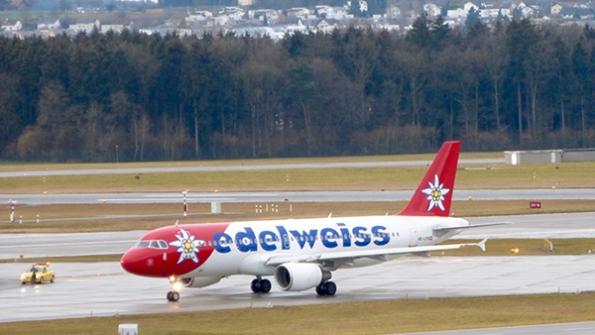
Swiss International Air Lines’ sister-company Edelweiss Air has had electronic flight bags on board its 16, mostly Airbus, aircraft for about a half-dozen years.
The airline continues to evolve these EFBs to make life safer and easier for pilots and supporting staff, according to Bruno Speck, senior manager for flight operations support and engineering.
The latest moves are adoption of a more automated and dynamic system for changing documents and making operational flight plans fully digital. In addition, Speck hopes to integrate Edelweiss’s electronic technical logs (ETLs) on the same EFBs used by other apps.
The carrier started out six years ago with two Panasonic Toughbooks attached to each aircraft. These were updated with memory sticks. Two years later, Edelweiss switched to iPads and now has an iPad Pro assigned to each pilot.
The devices click onto holding arms mounted on cockpit windows. Connection to an Aircraft Interface Device gives the position of the aircraft, and pilots can use this position for Lufthansa Systems’ Lido airport moving maps and charting.
Also on the iPads is Flysmart+, from Airbus’s NAVBLUE subsidiary, providing minimum equipment lists, configuration and performance calculations and other data. There is also what Beck describes as “a good safety management system suite.”
All operational documents are now in PDF form, and changes must be made manually, as a result of an email, call or conversation form a pilot. Edelweiss wants a more structured, accurate and easier way to change its manuals.
So it is converting PDFs into XML format and adding a workflow-based document management system from a Swiss company, Yonder. “Document units can be tagged and we can attach any metadata we want,” Beck cites as the advantages of XML.
And the Yonder system will bring benefits too. Now, when a pilot or other person wants to change a manual, he can push a change request into the system, and it will generate an entry. If it is merely an editorial change, the change will be reviewed by three editors.
If it is a more complex and substantive change, it will be reviewed by a larger group of specialists. A proposed text daft will then be generated and go to the manual’s originator. If approved, the change will be seamlessly and automatically made in all EFB documents.
“It’s a structured workflow,” Beck stresses. “We won’t make the wrong change or lose a change.” And it will be easy to track the changes made and who approved them.
Next up, Edelweiss would like to make its operational flight plans fully digital, especially the three-month flight plans. But the carrier still has to work with its plan provider, Sabre, on this enhancement.
At present, Edelweiss has ETLs provided by Crossmoss on Microsoft Surface tablets, two of which are attached to each aircraft. The provider does not at the moment offer the ETL for iPads, but Beck hopes to eventually integrate ETLs with the other apps on his iPads.





